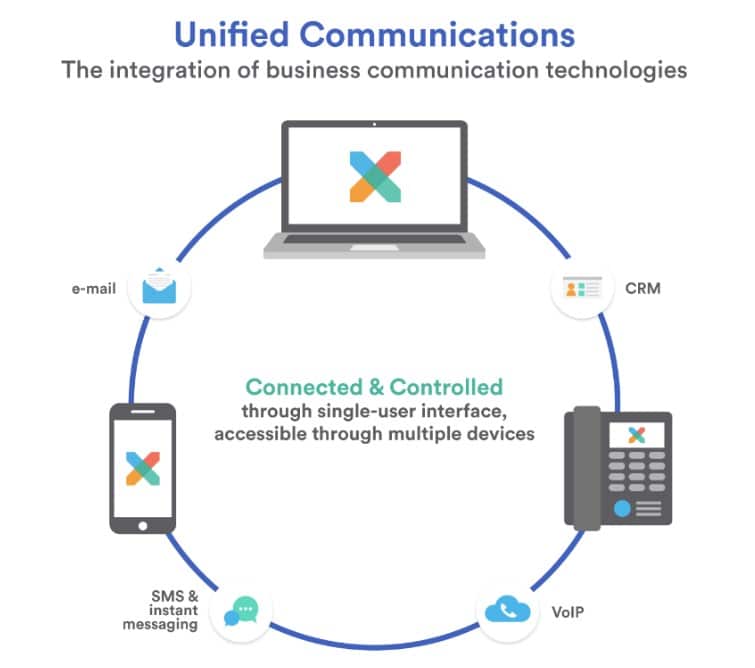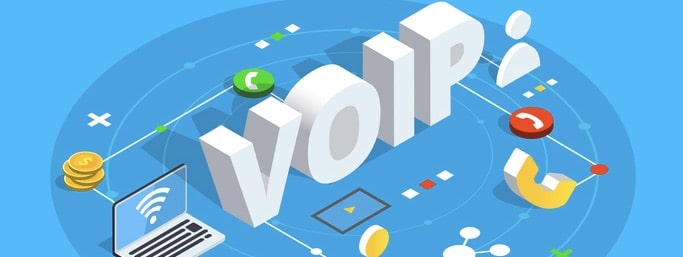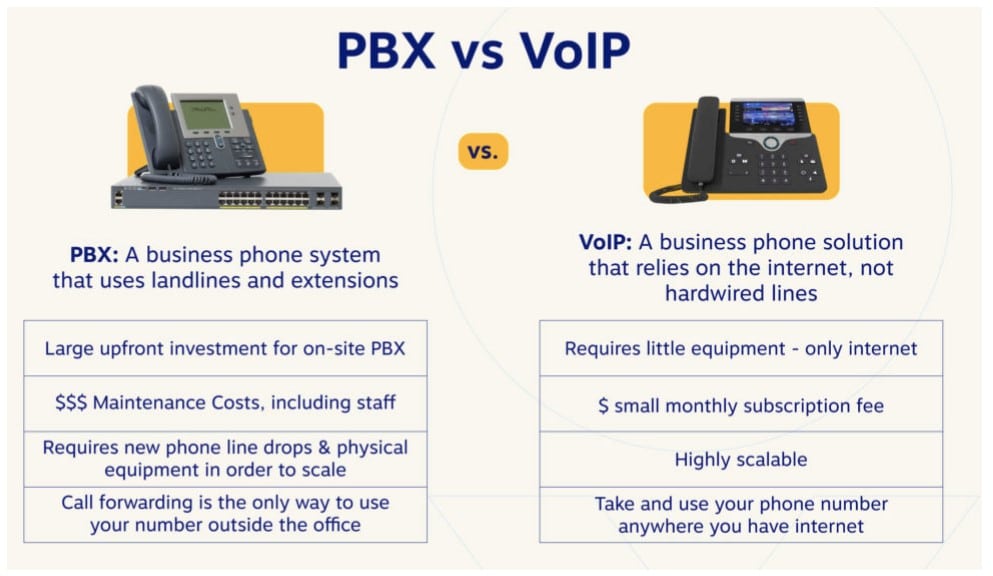VoIP technology is not just about making calls over the internet. It’s a strategy, a tool that redefines the core of customer service by enabling real-time, clear, and cost-effective communication. For businesses tirelessly working to enhance their customer interactions and support, VoIP unfolds as a genuine game-changer, breaking down geographical barriers and facilitating instant connectivity.
In a realm where every customer query demands swift and efficient resolution, VoIP stands tall as a solution that streamlines communication and significantly cuts down operational costs.
As we dive deeper into the essence and applications of VoIP technology in this blog, let’s discover the transformative impact it can impart to your customer service, ensuring no call goes unanswered and every customer feels genuinely heard and valued.
7 ways VoIP technology helps customer service
1) Unified communication
VoIP technology orchestrates a unified communication strategy, ensuring all customer interaction channels—whether calls, messages, or video conferencing—are streamlined under a single roof. This is not merely about taking calls but optimizing every communicative exchange.
A unified communication platform ensures that customer service representatives (CSRs) are not juggling between various tools. It enhances efficiency and provides customers with undivided attention and swift solutions. Moreover, the simplified internal communication amongst team members enhances collaborative problem-solving.

2) Enhanced accessibility
Imagine a customer from a different timezone trying to reach your service team. With conventional communication systems, the interaction would be confined to business hours or specific geolocations.
VoIP liberates customer service from geographical and time constraints, offering accessibility like never before. CSRs can connect from anywhere, ensuring that your customer service is not just a department but a global, 24/7 operational hub that stands tall, addressing queries and concerns without being bound by logistical limitations.
Let’s consider “GlobeShop”, an e-commerce platform that caters to international customers. A buyer from Australia might face an issue with their order at a time that corresponds to the wee hours in GlobeShop’s home country.
Traditional communication setups might force the customer to wait until the opening hours, which is not ideal in our fast-paced world and might risk customer dissatisfaction or loss.
VoIP enabled GlobeShop to set up virtual customer service stations where agents could be located anywhere in the world, effectively providing 24/7 customer support. This way, when the Australian buyer calls, an agent, perhaps located in a favorable timezone, can promptly assist, ensuring that help is always available.
This non-stop accessibility enhances customer satisfaction and ensures that the brand is always ready to assist, understand, and elevate the customer experience.
3) Customer data management
VoIP systems can be integrated with Customer Relationship Management (CRM) tools, ensuring that every interaction with a customer is not a standalone exchange but a part of a continuous, cohesive customer journey.
The moment a customer connects, the CSR has access to the entire interaction history, preferences, and potential issues even before the conversation begins. With flexible International calling plans integrated into VoIP systems, companies can provide this seamless customer experience globally while maintaining cost-effective communication across borders. This preemptive approach catalyzes problem resolution and personalized customer interaction, nurturing a relationship that’s not transactional but truly customer-centric.

Imagine “HealthSync”, a healthcare provider that offers teleconsultations. A patient who had a consultation a week ago is calling again with some follow-up queries. Without a unified system, the representative might struggle to retrieve past interaction details, causing delays and possibly affecting the healthcare advice provided.
But with VoIP and CRM integration, the moment the patient calls, their entire consultation history, previous concerns, and advised health plans are displayed to the CSR or healthcare professional attending the call.
This means that the advice or support provided is not in isolation but is cognizant of the patient’s history and prior interactions. The customer (patient) feels genuinely acknowledged and cared for, as their history is not a disjointed record but a continuous journey toward better service and healthcare.
4) Cost-effectiveness
Investing in VoIP is not just a technological upgrade but a financially prudent decision. Traditional telecommunication systems often involve hefty installation costs, maintenance, and international calling charges. Moreover, with a VoIP phone system, businesses can enjoy enhanced flexibility and scalability, making it easier to adapt to changing needs.
VoIP slashes these expenses, offering a communication solution that’s not just technologically superior but also economically viable. Savings on communication can be redirected toward enhancing other dimensions of customer service, like training programs for CSRs or implementing additional support tools.
5) Scalability and flexibility
Business needs are not static. There are peak seasons, expansion phases, and periods of downturn.
VoIP allows customer service to scale as per the prevailing business needs. Adding or reducing lines, integrating new features, or modifying the existing setup can be done with minimal hassle. This ensures that the communication backbone of your customer service is not just robust but also extremely adaptable to changing business landscapes.
6) Quality assurance
Ensuring consistency and quality in customer interactions is pivotal. VoIP allows recording, monitoring, and analyzing calls, enabling a structured quality assurance mechanism. CSRs can be provided with constructive feedback, training sessions can be tailored as per the emerging needs, and most importantly, customer interactions can be continuously refined. This isn’t just about rectifying flaws but weaving a culture of perpetual improvement in customer interactions.
7) Security and compliance
Customer interactions are not just messages; they’re exchanges of trust. VoIP technology is embedded with encryption and security protocols ensuring that every conversation, every shared piece of information is securely transmitted and stored.
For industries that are bound by stringent compliance and data protection laws, VoIP assures that your communication infrastructure is not just technologically advanced but also fortified with paramount security, safeguarding interests, and trust of both the business and its customers.
Wrapping up
Adopting VoIP is not just an upgrade; it’s an overhaul of how customer interactions are managed, perceived, and improved.
It’s about ensuring that every call, message, and shared data byte is treated with the highest standards of efficiency, security, and customer-centricity. As businesses progressively evolve, embedding technology into their operational DNA, VoIP emerges not just as a tool but a strategy, ensuring that the voice of both the customer and the business is heard loud, clear, and in perfect harmony, regardless of where they are and what challenges are thrown at them.
In the cacophony of emerging technologies, VoIP stands out, ensuring that customer service is not just a department but a philosophy that echoes across every facet of the business.




